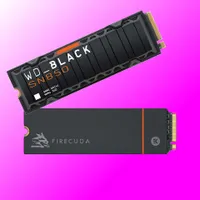Despite being older than the PC, magnetic tape storage is far from dead, in fact it's growing with 153,000,000 terabytes of the fragile stuff shipped in 2023
Though it's still less than the amount of HDD storage shipped in just three months.

If you want super-fast storage, you get an SSD. If you need lots of storage, you get an HDD. But does anyone want very slow and fragile storage, like magnetic tape? Turns out the answer is an emphatic yes, as almost 153 exabytes of the stuff was shipped around the world in 2023—3% more than the previous year.
Many of you will be like me, in that you grew up around computers that stored all data on cassettes or cartridges that held a spool of magnetic tape. The use of ferromagnetic materials as a medium for data storage is as old as the electronic computer itself, but tape is fragile, slow to use, and entirely linear (which makes doing random reads a very tedious process).
So as the floppy disk, then later the hard disk drive came to dominate the storage market, it was generally thought that magnetic tape would soon be consigned to history. As reported by Ultrium LOT (via Tom's Hardware), details on the amount of tape storage shipped throughout 2023 showed that this is very much not the case.
Hewlett Packard Enterprise, IBM, and Quantum Corporation co-develop the LTO (Linear Tape-Open) Ultrium format and it gets used in magnetic tape cartridges that can store up to 18TB, with a read speed of 400 MB/s. Those numbers might not seem very good but LTO is primarily used for system backups and data archives, so raw speeds aren't important.
What is important is the very low cost-per-GB of tape and even though the medium itself is quite fragile, LTO storage cartridges themselves are reliable and robust. This is why, as the world creates ever more data, magnetic tape is still a popular choice for cheap, large-scale, long-term storage.
That said, while 153 EB (153,000,000 TB) sounds a lot, the shipment report notes that this value is based on a 2.5:1 compression ratio being used by the magnetic tape storage, so the raw figure is 'only' a little over 60 exabytes. Okay, that's still a huge amount but in the last three months of 2023, total HDD shipments were estimated to be around 212 EB, so it's not like tape is any kind of threat to even that market.
If you're wondering what the numbers are like for SSDs, nearly 780 EB of flash was shipped throughout last year, so when it comes to raw capacity, the humble HDD is still king. Large-capacity SSDs, those bigger than 4TB, are still painfully expensive and although it's the storage medium of choice when it comes to raw performance, if you want lots of reliable, reasonable quick terabytes, then hard disks are the way to go.
Keep up to date with the most important stories and the best deals, as picked by the PC Gamer team.
Until large flash chips became cheap as…well…chips (potato not silicon), then HDDs and magnetic tape are still going to be around for a long time yet.
Best SSD for gaming: The best speedy storage today.
Best NVMe SSD: Compact M.2 drives.
Best external hard drive: Huge capacities for less.
Best external SSD: Plug-in storage upgrades.

Nick, gaming, and computers all first met in the early 1980s. After leaving university, he became a physics and IT teacher and started writing about tech in the late 1990s. That resulted in him working with MadOnion to write the help files for 3DMark and PCMark. After a short stint working at Beyond3D.com, Nick joined Futuremark (MadOnion rebranded) full-time, as editor-in-chief for its PC gaming section, YouGamers. After the site shutdown, he became an engineering and computing lecturer for many years, but missed the writing bug. Cue four years at TechSpot.com covering everything and anything to do with tech and PCs. He freely admits to being far too obsessed with GPUs and open-world grindy RPGs, but who isn't these days?


